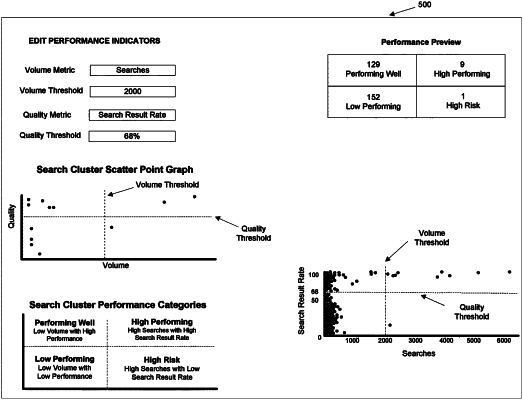| CPC G06F 16/287 (2019.01) [G06F 16/248 (2019.01)] | 17 Claims |

|
1. A method comprising:
generating, by a processing device, a cluster comprising a set of search terms;
comparing a size of the cluster to a cluster size threshold level to determine that the cluster comprises a valid-sized cluster;
comparing a noise rate of the cluster to a noise rate threshold level to determine that the noise rate is less than the noise rate threshold level, wherein the noise rate relates to a distance of the cluster from a set of other clusters;
collecting data associated with a plurality of search queries relating to the cluster;
generating first performance data associated with the cluster based on a comparison of the data with a search quality threshold level and a search volume threshold level, wherein the search quality threshold level relates to one of a search result rate or a click through rate associated with the cluster;
generating a user interface to display first information associated with the cluster comprising the first performance data in view of the search quality threshold level and the search volume threshold level;
receiving input via the user interface, wherein the input comprises an adjustment of the one or more of the search quality threshold level or the search volume threshold level to establish one or more adjusted threshold levels;
generating second performance data associated with the cluster based on a comparison of the data with the one or more adjusted threshold levels; and
causing an updated display, via the user interface, of the second performance data.
|